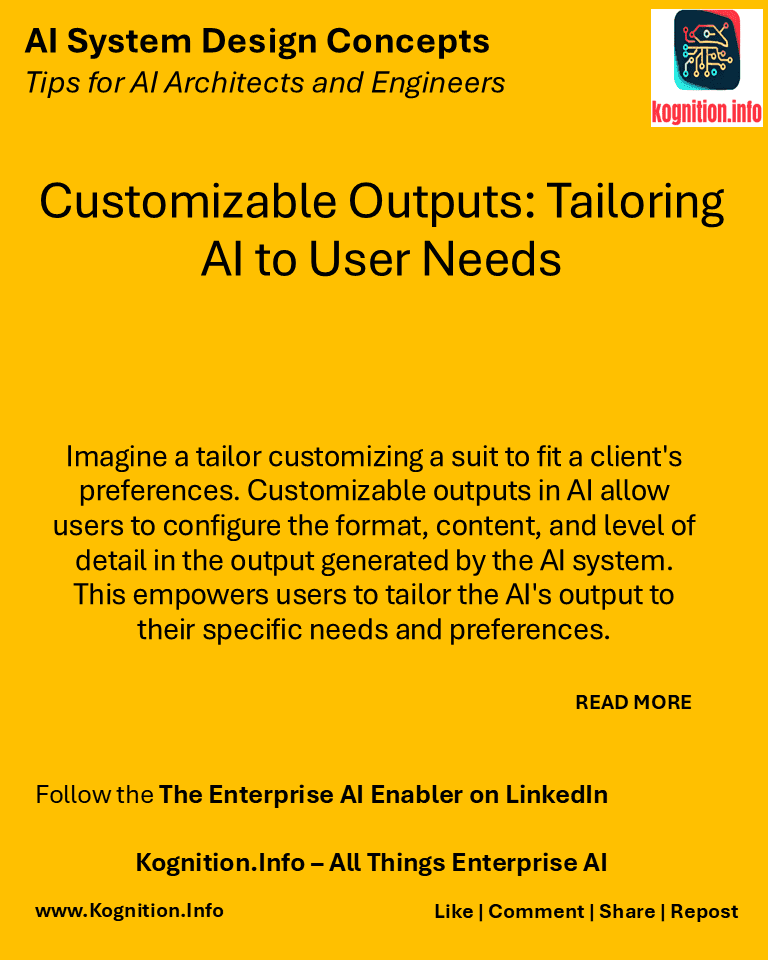
Imagine a tailor customizing a suit to fit a client’s preferences. Customizable outputs in AI allow users to configure the format, content, and level of detail in the output generated by the AI system. This empowers users to tailor the AI’s output to their specific needs and preferences.
Use cases:
- Personalized recommendations: Allowing users to specify the types of recommendations they are interested in (e.g., movies, books, products).
- Customizable reports: Enabling users to choose the data points, visualizations, and level of detail included in AI-generated reports.
- Flexible data exploration: Allowing users to customize the format and presentation of data analysis results.
How?
- Identify customization options: Determine the different aspects of the output that users can customize.
- Provide user controls: Create interfaces with options for users to select their preferences.
- Generate dynamic outputs: Develop the AI system to generate outputs based on user-selected configurations.
- Offer presets: Provide pre-defined configurations or templates for common use cases.
Benefits:
- Enhanced user experience: Empowers users to tailor the AI’s output to their specific needs.
- Increased user satisfaction: Provides a more personalized and relevant experience.
- Improved decision-making: Allows users to focus on the information that is most important to them.
Potential pitfalls:
- Complexity: Implementing customizable outputs can add complexity to the AI system.
- User confusion: Too many customization options can overwhelm users.
- Maintaining consistency: Ensure that customized outputs remain consistent with the overall design and branding of the AI application.
